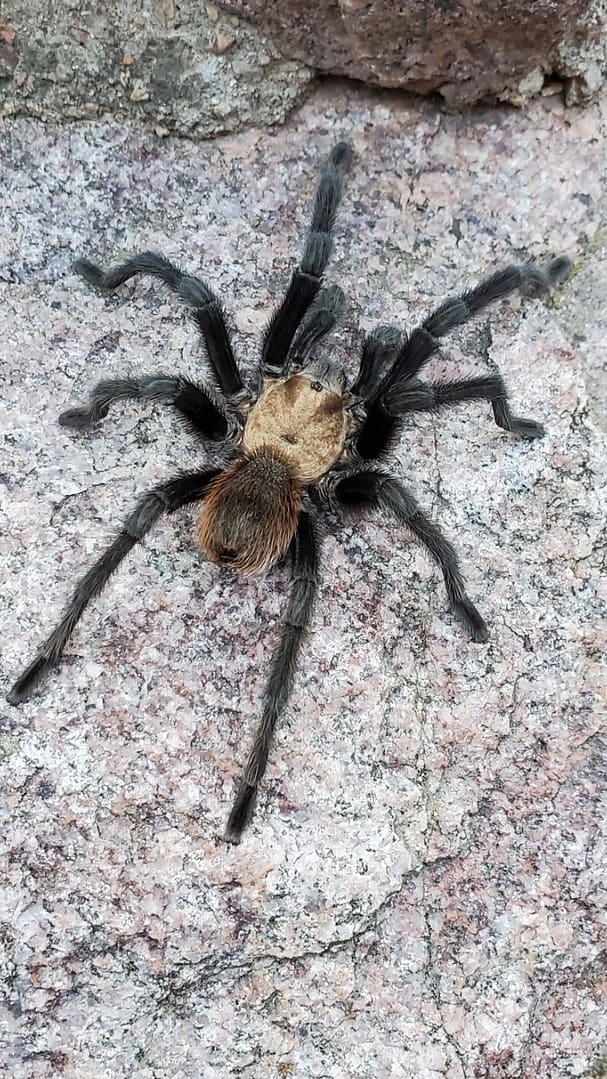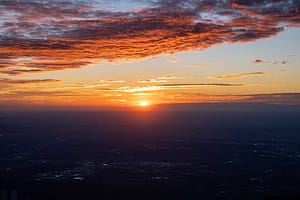Annual Colorado Tarantula Migration
Hoards of tarantulas are descending on Southern Colorado? It’s not a nightmare — it’s tradition. Well, migration. But what is annual migration if not a tradition of traveling? Spider season has begun in our fair mountain state. It might come as a surprise to those of you who chose to live with dry, icy winters specifically to avoid gangs of roving arachnids, but Colorado is home to a rather cool spider phenomena, the annual tarantula migration. We’ve got the details on this webby wonder, including where to watch (or avoid) when the critters start crawling.
What is the Tarantula Migration?
Every year, beginning in September and running through October, the chillier temps signal to thousands of male Oklahoma brown tarantulas that it’s time to update their dating profiles and start hitting the streets in search of love. These amorous arachnids wander for miles in search of lady spiders hanging out patiently in their homes for their gentleman callers.
Brown tarantulas live in little burrows lined with webs with a narrow tunnel leading to the surface. That narrow part will be important later. They use the tunnel to leave the burrow and go on hunting excursions after dark. The females of the species live for well beyond a decade, with the Oklahoma Wildlife Department (OWD) noting that some can reach 30 years old or more.
The males, not so much. Most of them barely make it a year, per OWD. Apparently traveling to find a mate comes with a lot of risks, like being picked off by wasps or run over by cars. And then there’s the fact that some of the females like to make the encounter a lunch date with their new boyfriend as the main entree. Remember the mention of narrow tunnels? Turns out they can be mighty tight when you’re trying to outrun your hangry honey.
After mating, the male spider zips off into the sunset (or onto the dinner table) and the female tarantula starts laying eggs and attaching them to the webs lining the burrow. The eggs hatch after about one and a half to two months and mom hangs with them until they leave and start their own little homes. That latter part only lasts a few days. Like all families, close quarters and potential cannibalism tend to make everyone catch the wanderlust pretty quick.
What Does a Brown Tarantula Look Like?
How do you know if you’ve encountered a brown tarantula? The brown part gives you a clue, but there are a lot of brown spiders out there. What sets these guys apart? First, they’re big. Their bodies can reach two inches long. Add in the legs and you’re up to a five-inch span for the furry little friends — and yes, they are furry. To sum it up, you are not going to miss these spiders when they are crawling along the ground. Big, brown, furry spider, check.
When and Where to Watch the Tarantula Migration
Where can you check out the tarantula migration? When is the best time to watch? The City of La Junta has a lot of tips for spider spotting. They’ve really embraced their notoriety as a rest stop on the route to romance, including a whole page dedicated to the season and a Tarantula Fest. The fest has bike rides, tarantula tours and lots of spider-themed fun all hosted at the end of September.
First, Where to Watch the Colorado Spider Migration:
In order to catch the most spider activity, travel to the southeast corner of the state near La Junta and Lamar. Highway 109 through the Comanche Nation Grassland is one of the most touted viewing areas, although that comes with the caution to pull far off the road and watch for passing cars (and spiders). Spider activity is big in the grasslands. One rather horrifying recommendation is to look for tarantula hawk wasps if you want to find more spiders. The wasps stalk the area looking for arachnids to become living hosts for hatching their future offspring. The process is not voluntary.
The Best Time to Watch the Spider Migration:
There’s not just a best time of year to watch the spiders; there’s also a best time of day. The La Junta spider page says that activity starts picking up in the afternoon, with a peak of activity the last hour before the sun goes down. Maybe the spiders think that the southern corner of the state is too hot, too.
Tarantula Viewing Tips
Before we send you off on your arachnid expedition, we thought we would share a few tips to make the experience more fun and protect the fuzzy little Fabios as they woo their lady loves.
- Leave the spiders alone. You may see people capturing spiders or picking them up — don’t be one of them. Think of it this way: The male spider only lives for a short time and he has about six weeks to find a mate. Even a few minutes of being held by a human could cost him his chance. Who are we to stand in the way of love?
- Watch your step. These dudes are all over and sometimes they blend in with the terrain. Tread carefully so you don’t end someone’s life before his girlfriend has a chance.
- Be a good guest. Treat the grasslands with respect, stay out of roadways and don’t tread on private property or block driveways.
- Don’t panic. If you get bitten (and you shouldn’t if you follow the first tip), the venom is not harmful to humans. It can sicken smaller animals, but that should not be a factor in your viewing experience. At most, you may experience irritation at the site of the bite.
- Leave burrows alone. If you see a hole, don’t dig it up. Oklahoma brown tarantulas stay in their burrows for most of their lives. If you dig it up, you’re basically tearing down the equivalent of a Victorian home with grandma still inside. Don’t be that human.
The tarantula migration is a fascinating and unique Southern Colorado experience that everyone — even folks who are not fans of spiders — should catch at least once. Happy tarantula tracking!





